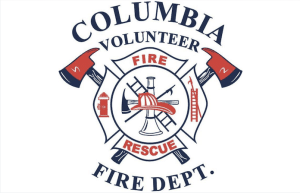Drug-free coalition resumes
The Monroe County Coalition for Drug-Free Communities on May 1 met publicly for the first time in several months to discuss the growing presence and impact of cannabis, with plans to continue its regular meetings going forward.
Coalition chairman Bill Rebholz opened the meeting by discussing the current status of the coalition, specifically commenting on how the COVID-19 pandemic threw a wrench into group operations.
“The coalition, kinda like a lot of organizations, went through the whole COVID thing, and I think, comfortably, we can say for the most part we’re past that,” Rebholz said. “So I think what the community can expect is the coalition will start picking up its cadence again.”
Rebholz added after the meeting that the executive board of the coalition has met a number of times over the last few months, with many expressing enthusiasm for continuing the mission of addressing substance abuse in Monroe County.
He also spoke further about the impact the pandemic had on the volunteer-dependent coalition.
Many in the group found themselves having to deal with the pandemic affecting their jobs or families, though interest in the coalition persisted.
“It was a big soup that affected everything, and since we rely heavily on volunteers, it affected us in that way,” Rebholz said. “The board always stayed in touch and kept talking and everything, but even some of the things we rely on for information, that changed too. But I do think we never lost our focus. There was never any question about whether or not the coalition was gonna keep rolling.”
Rebholz also commented on the status of the grant through the Center for Disease Control’s Drug Free Communities Support Program, which the coalition is hopeful to receive in the near future, though activity will continue regardless.
The bulk of the meeting featured a presentation from community strategist Landon Robert with PreventEd, a St. Louis organization focused on education concerning addiction and substance abuse.
Robert spoke about cannabis and its growing prevalence in society, offering a variety of state and national statistics describing cannabis use among young people.
Offering data from the National Survey on Drug Use and Health, Robert noted that 10.1 percent of adolescents ages 12-17 – roughly 2.5 million individuals – used cannabis in 2020, with most smoking it and others consuming it through a vape, food or dabbing.
He explained that early use is important for groups like PreventEd to look into as this can heavily impact the possibility of dependence.
“In the prevention field, basically the core of what we work on is the earlier a youth uses or experiments with a substance, the more likely they are to develop a problem with the substance later on in life,” Robert said.
Among the rest of the data he provided was information on the apparent connection between cannabis and depression, anxiety and other mental health issues.
He added that while there is a correlation between cannabis use and anxiety, this does not inherently determine causation, as it’s not entirely clear whether consumption can cause anxiety or if those with anxiety are simply drawn to use cannabis.
Robert further commented on the place of cannabis in society, saying that unlike alcohol or other illicit substances, there isn’t an abundance of research on the effects of cannabis, thus communities might find it difficult to address heavy use of the drug as it becomes more widely legal and available.
“We know what works, and there’s evidence-based programs, and there’s not that as much with marijuana yet,” Robert said.
The coalition’s next meeting is planned for June 5 at the Monroe County YMCA.






